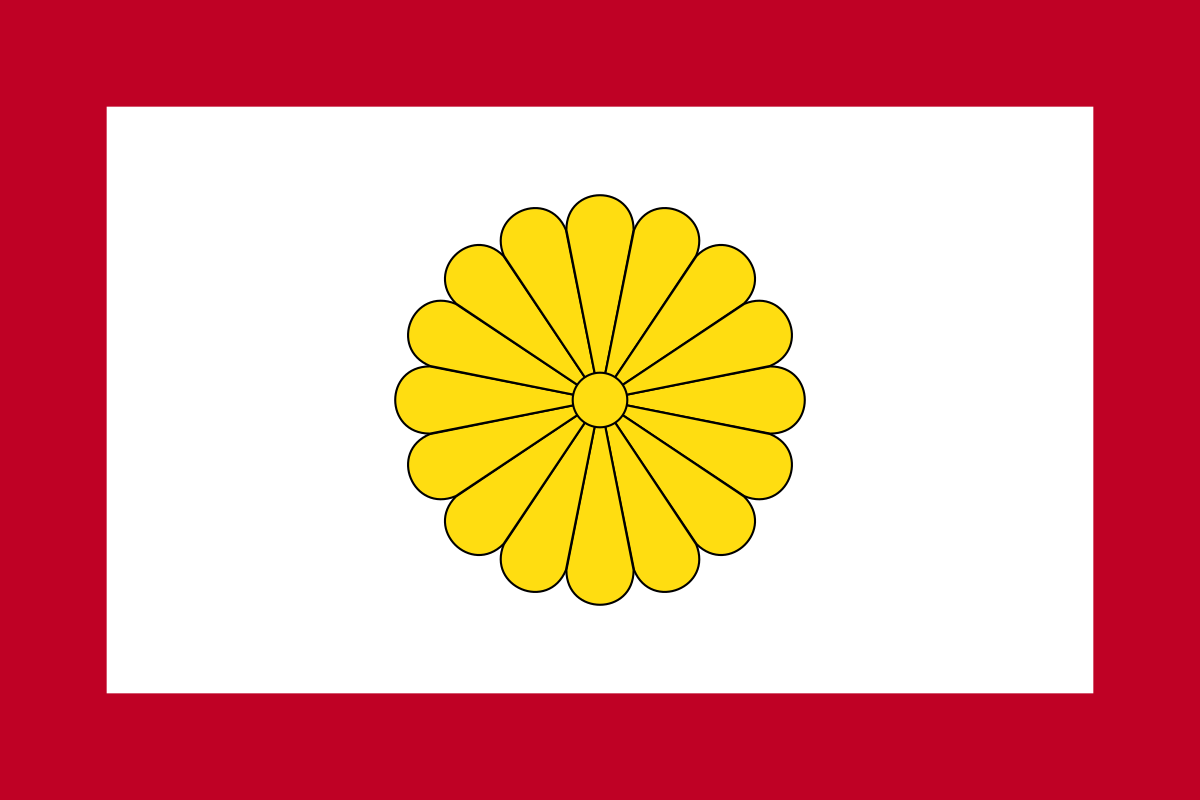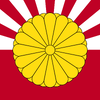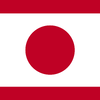
Flag of the Japanese Regency Council (I&B4) by @Thorvald (El Thorvaldo)
SVG remake of JohannaK's original raster, uploaded to the defunct IOT Wiki in 2019. Adapted from the Imperial Seal of Japan.
In Iron and Blood 4, Japan's primary point of divergence was the regency council of Toyotomi Hideyori enduring, as Tokugawa Ieyasu (who historically overthrew the Toyotomi dynasty soon after Hideyoshi's death) was killed battling Ming forces during the invasion of Korea. Instead, the leaders of clans Mōri, Ukita, Maeda, Uesugi, and Shimazu divided control of the country between themselves and their vassals. The council was dissolved when Hideyori came of age, but this regionalized power structure would influence Japanese politics for centuries afterward: when the fifteen-year-old Toyotomi Inomasa resisted the imposition of a regency council, the Shimazu and Mōri rebelled, seeking to reverse his grandfather Hidetsugu's relocation of treaty ports off the mainland that had diminished their commercial power. Grievously wounded in the final battle, Inomasa did not father an heir until late in life, ironically forced to establish a regency council for his son Yoshifune, choosing daimyō from Taiwan, Korea, Kitaezo, Karafuto, and Hokkaidō to undercut the power of the home island clans. Proving that history rhymes, the councillors attempted to leverage their power to secede when the regency was dissolved, leading to a two-year war and the annexation of Japan's periphery territories into the state proper.
In order to advance his modernization agenda, in the mid-1850s Yoshifune reorganized the government, expanding his hereditary office of kampaku into its own Council of Regency, with four advisors elected from the Reunion of Daimyō, the new legislature's lower house. Officially an advisory body to the Emperor, the Council was the government executive and invested with lawmaking power equivalent to the Crown itself, although procedurally it required the Reunion's assent. Following backdoor politics that saw Zaibatsu representatives inducted into the samurai caste, in 1868, the first Zaibatsu chairman was elected to the Council, and since 1874 all elected advisors were Zaibatsu chairmen, with government policy aligning toward corporatist objectives.
Download submitted to DeviantArt October 2022; alternative download available via Patreon.
Comments & Critiques (0)
Preferred comment/critique type for this content: Any Kind



Leave a Comment
You must be logged in and have an Active account to leave a comment.
Please, login or sign up for an account.